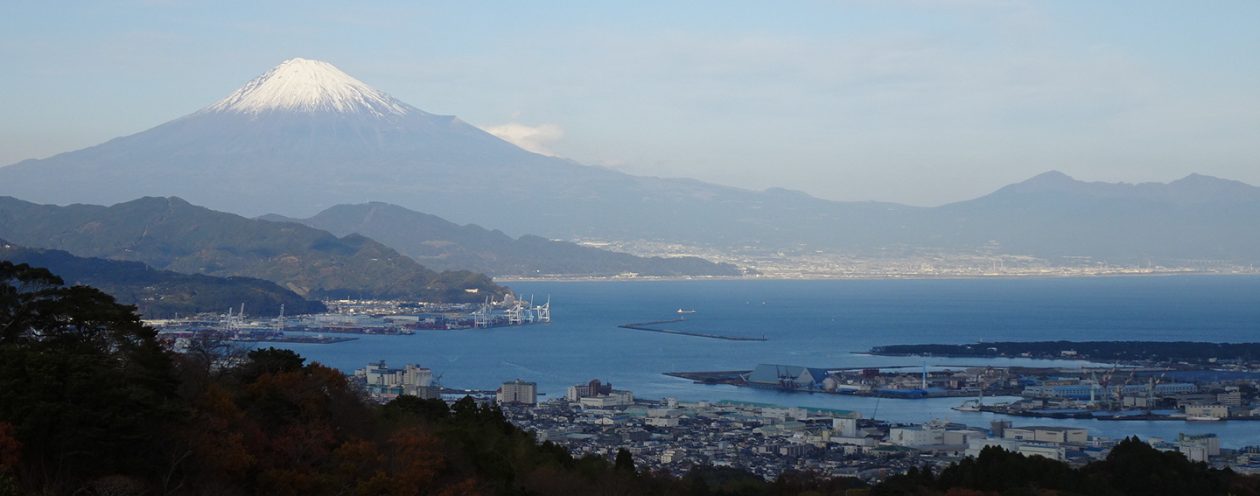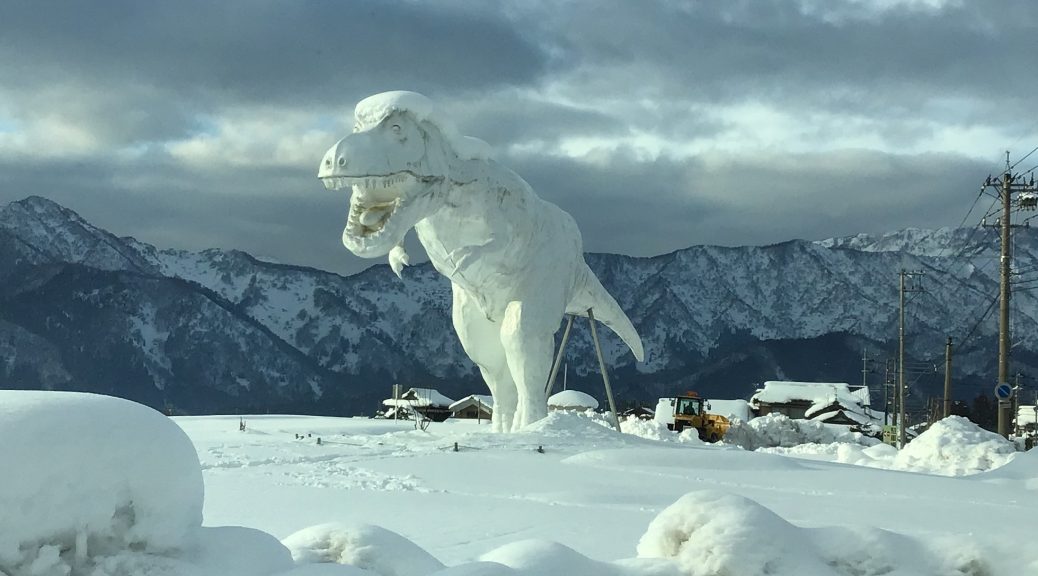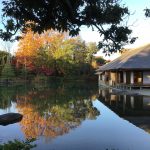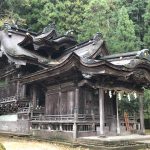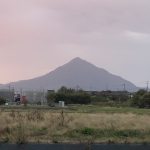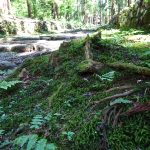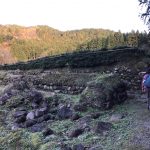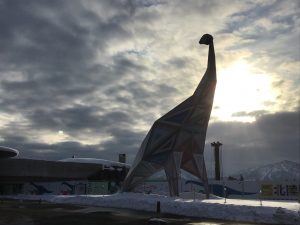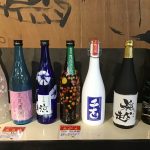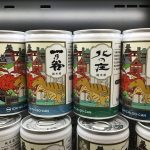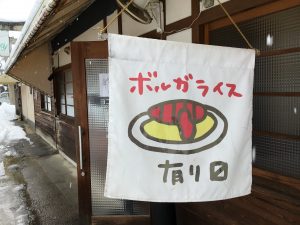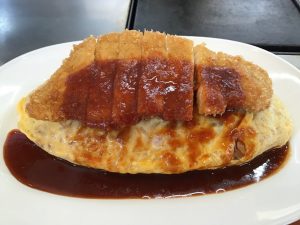F-99 What’s in Fukui?
It’s plain but actually amazing!
In March 2024, the Hokuriku Shinkansen Bullet Train had extended from Kanazawa to Tsuruga, making us much easier to access Fukui Prefecture from Tokyo.
There is a Japanese expression that says “It is darkest under the lighthouse” (same meaning of “the grass is always greener on the other side of the fence”), and if we live there for a long time, we often don’t notice the charm of the place.
Fukui Prefecture is no exception, sandwiched between Kyoto and Kanazawa, it is not as glamorous as these two prefectures, and even the prefecture’s residents, with a population of less than 800,000 (the 5th fewest), are self-deprecatingly aware of its “plain” nature.
However, thanks to the Shinkansen Train, the number of tourists from other prefectures is gradually increasing, and the “charm of Fukui Prefecture seen from the outside” is being discovered!
What exactly does Fukui have?
Let’s take a look at its charm together!!
Historical Stage
Fukui, used to be called “Echizen Province”, has several famous castles such as Maruoka Castle, the only original castle tower still standing in the Hokuriku region; Echizen Ono Castle, a castle in the sky floating in a sea of clouds; and Ichijodani Asakura Clan Ruins, the Little Kyoto of the Hokuriku region. Hakusan Heisenji Temple, one of Japan’s largest religious cities, is also famous as a moss-covered temple. All of these places have strong ties to Nobunaga Oda and the “Ikko Ikki”, and we can almost hear the thoughts of the castle lords who were at the mercy of the times.
*”Ikko Ikki” was a religious group formed during the Sengoku period by samurai warriors, farmers, and city dwellers who were followers of Honganji Temple, and was an armed uprising that was formed to fight against the shugo daimyo (feudal lord) and warlords of the shogunate. It was a monolithic group that caused suffering to both Nobunaga Oda and Ieyasu Tokugawa.
– Maruoka Castle,
the only surviving castle tower in the Hokuriku region
Maruoka Castle, the only original castle tower still standing in the Hokuriku region, was built in 1576 by order of Nobunaga Oda as a precaution against the Ikko Ikki uprising during the Sengoku period.
In the Edo period, the castle was successively ruled by the Honda and Arima families.
The shortest letter in Japan
“A message to you: Be careful of fire. Don’t make Osen cry. Fatten the horses.”
This letter was sent by Honda Sakuzaemon Shigetsugu, a loyal retainer of Ieyasu Tokugawa, to his wife from the camp during the Battle of Nagashino (1575). It is said to be a good model of a letter that conveys the message succinctly and clearly.
From the outside, it looks like a two-story building, but in fact it is three stories inside. There are no through pillars between the first floor and the second and third floors, so the first floor supports the second and third floors.
There is an excellent view from the third floor of the castle tower. You can enjoy different faces depending on the season: cherry blossoms in spring, fresh greenery in summer, autumn leaves in fall, and snow-scapes in winter.
– Hakusan Heisenji Temple,
the beauty of moss and silence
Hakusan Heisenji Temple was established as the base of worship of Mt. Hakusan in Echizen (Fukui), and at its peak in the Sengoku period, there were as many as 8,000 warrior monks, and it prospered as the largest religious city in Japan at the time. However, in 1574, it was attacked by the Echizen “Ikko Ikki” forces and the entire mountain was burned down.
Currently this temple is called “moss-covered temple“, in fact the name of the “temple” was abolished due to the Meiji era’s Separation of Shinto and Buddhism Edict, and it is now “Hakusan Shrine”.
We can recall the appearance of Hakusan Heisenji Temple in the past with sights such as Mitarai Pond, where it is said that the goddess who guided Taicho to Mt. Hakusan appeared, and a large cedar tree that is said to have survived the burning of the entire mountain. Next to the temple grounds, we can see a magnificent stone-paved road, one of the largest medieval ruins in Japan, and the remains of a group of temples that are arranged in steps up the slope, allowing us to experience over 1,300 years of history and the beauty of the moss and silence.

– Ichijodani Asakura Clan Ruins,
Japanese Pompeii!
The Asakura clan was a powerful clan from Hyogo Prefecture that entered Echizen (Fukui) during the Nanboku-cho period.
After their active participation in the Onin War in 1467, they moved their base to Ichijodani and pacified Echizen Province. Since then, it prospered as the center of Echizen Province for 103 years over five generations, and during this time it was visited by cultural figures such as aristocrats and monks from Kyoto and Nara, and was also called the Little Kyoto of the Hokuriku region. However, in 1573, during the battle to unify the country, they were defeated by Nobunaga Oda, the Asakura clan was destroyed, and the castle town was burned out.
Fortunately, the entire area was protected from drying and weathering because rice paddies covered, so the townscape, including samurai residences, temples, town houses, craftsmen’s residences, and roads, was excavated in almost perfect condition, and the ruins have been designated as a special historic site and special place of scenic beauty by the national government, and the excavated items have been designated as important cultural properties.
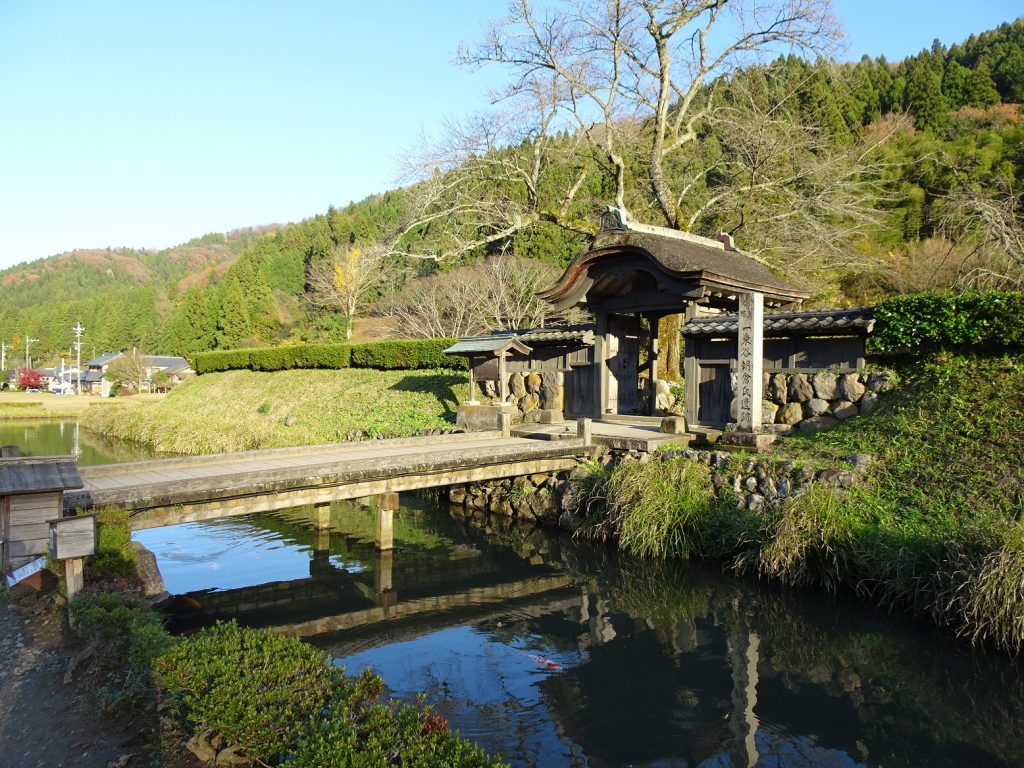
– Echizen Ono Castle,
the sky floating castle in a sea of clouds
Echizen Ono Castle was built over a four-year period starting in 1576 by Kanamori Nagachika, one of Nobunaga’s elite retainers. Nagachika began building a flatland castle (Ono Castle) on “Kameyama” small mountain and a castle town on its eastern foot. After that, 19 people served as the castle’s lords until the castle was sold off in the Meiji era. Doi Toshitada, who entered Ono as the feudal lord at the age of 19 in 1829, was a wise ruler at the end of the Edo period, and made uch effort the restoration of the domain’s finances and the promotion of talented people.
The stone walls are from that time, stacked using a method called “Nozura-zumi“, and are a prefectural cultural property. The current castle was rebuilt in 1968, and the belongings of past castle lords are on display inside the castle.
Depending on the weather conditions, from late autumn to spring, we can see the fantastic view of Echizen Ono Castle floating in a sea of clouds, which has earned it the nickname “Castle in the Sky.”
Nagachika was also an expert not only in castle construction but also in town planning. He thought that this town, where the Mino Kaido (to Gifu) passed through, should encourage commerce. Usually, castle towns are built vertically in relation to the castle, but Ono’s castle town is horizontally long, and prioritized commerce over defense. Even today, old shops selling local miso, soy sauce, and sake line the streets, and a morning market is held selling vegetables and other products.
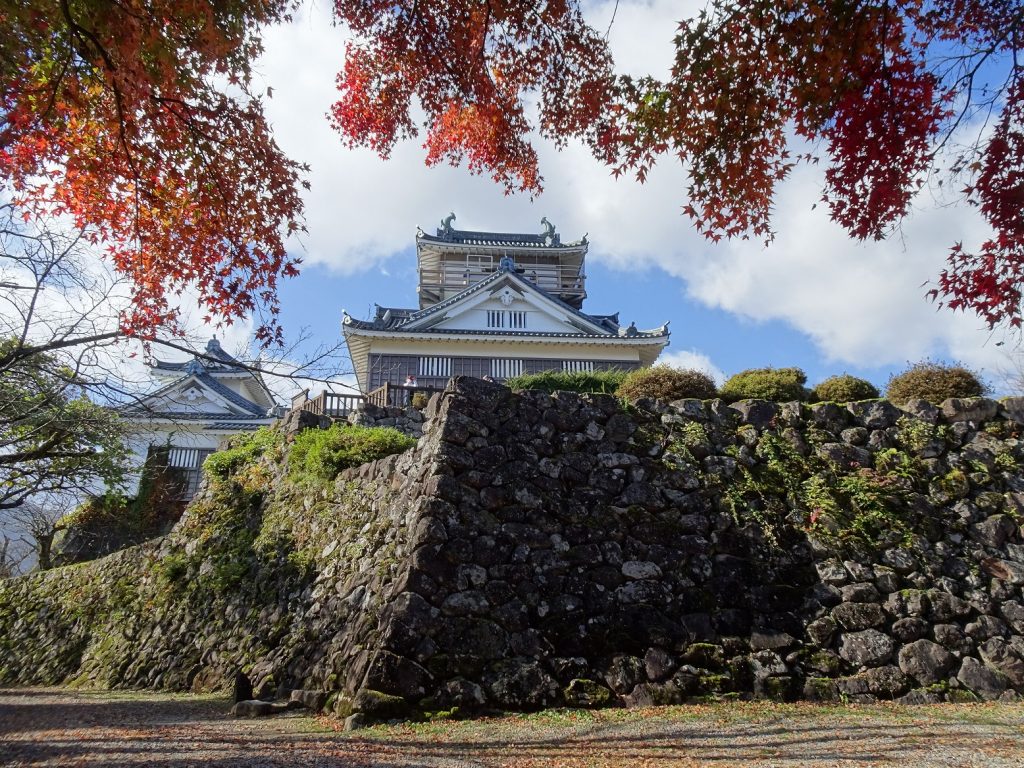

Geology, Geoparks, Scenic Spots
– Fukui Prefectural Dinosaur Museum
There is Japan’s largest dinosaur fossil excavation site in Katsuyama City, and Fukui Prefecture is also known as the dinosaur kingdom. The reason why so many dinosaur fossils have been discovered here, among the strata that were deposited when dinosaurs were alive, there are parts (bone beds) where a lot of bones have been collected. About 80% of dinosaur fossils discovered in Japan have been found in Fukui Prefecture. Some of these dinosaur fossils were discovered for the first time of the world in Fukui Prefecture, and there are many dinosaurs named after “Fukui” such as “Fukuisaurus”, “Fukuiraptor”, “Fukuivenator”, and “Fukuititan”.
In addition, historical discoveries other than dinosaurs are being made one after another, such as the excavation of the oldest new species of mammal in Japan.
The “Dinosaur Museum” here is one of the world’s largest museums, a treasure trove of dinosaur fossils. The vast, column-free space is packed with dinosaur skeletons, fossils and specimens, dioramas, and reconstruction models, allowing us to see the impressive dinosaurs up close, and both adults and children can enjoy it.
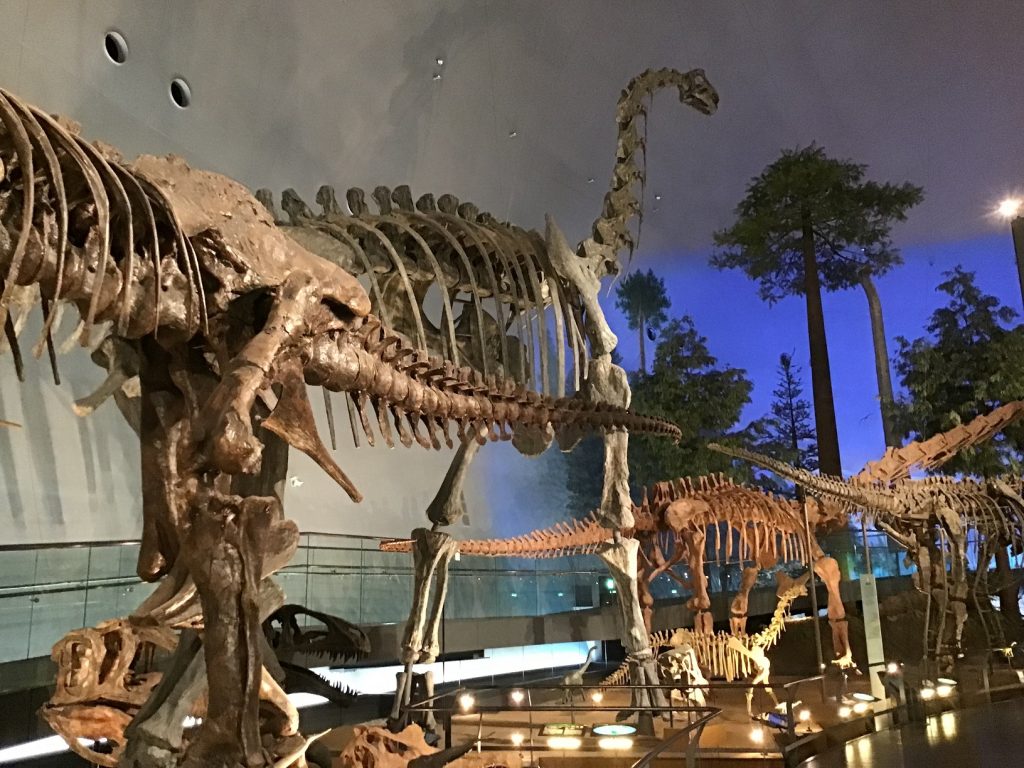
– Tojinbo Cliffs
“Tojinbo” is a large columnar joint that stretches for about 1 km. When you stand on the edge of the cliff, your legs will freeze.
Columnar joints are cracks when lava or magma cools and solidifies. When magma rises close to the surface of the earth, its temperature drops and its volume decreases, causing it to shrink. At that time, pentagonal or hexagonal columnar cracks are formed. These are called columnar joints, and Tojinbo’s columnar joints were formed when lava erupted and solidified about 13 to 12 million years ago. It was further eroded by crustal movements and the rough waves of the Sea of Japan to its current shape. It is truly a work of art created by nature.
Such large-scale columnar joints are rare in the world, and it is counted among the “Three Great Scenic Spots of the World.” Its rarity is recognized nationwide, and it has been designated a “National Natural Monument” and selected as one of the “Top 100 Geological Sites in Japan.”
It is also known as a famous sunset spot, and has been selected as one of the “Top 100 Sunsets in Japan.” Furthermore, in recent years, it has also become popular as a spot where we can see the “Green Flash” several times a year, a phenomenon in which the sun shines green for a few seconds as it sets over the horizon.
The name “Tojinbo” is come from a monk named “Tojinbo” who was at Hakusan Heisenji Temple (mentioned above) during the Heian period, who was made drunk and pushed off a cliff.
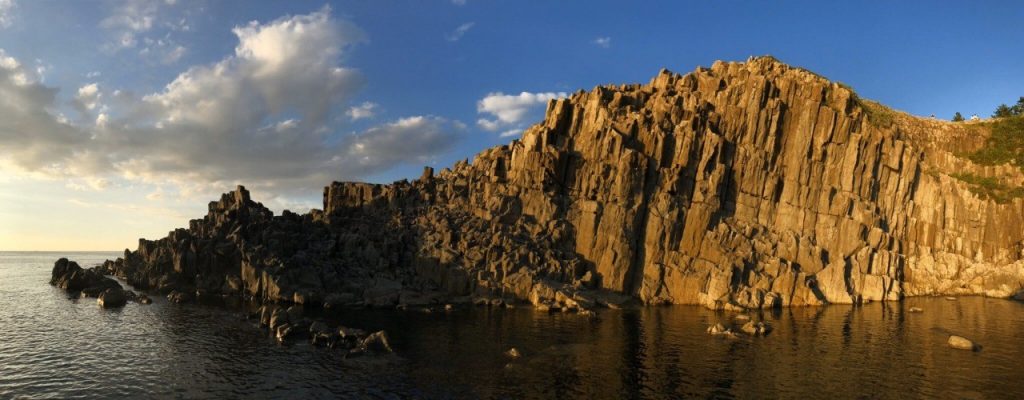
– Mikata Five Lakes
Mikata Five Lakes is the collective name for five lakes that span Mihama Town and Wakasa Town in Fukui Prefecture. The five lakes have different water qualities and depths, and all appear in different shades of blue, hence the name “Five Colored Lakes.” These differences are easily visible from the 11.2km long Mikata Five Lakes Rainbow Line Road, and you can enjoy the dynamic scenery of the five lakes and the Sea of Japan. In November 2005, the area was registered as a Ramsar Convention wetland.
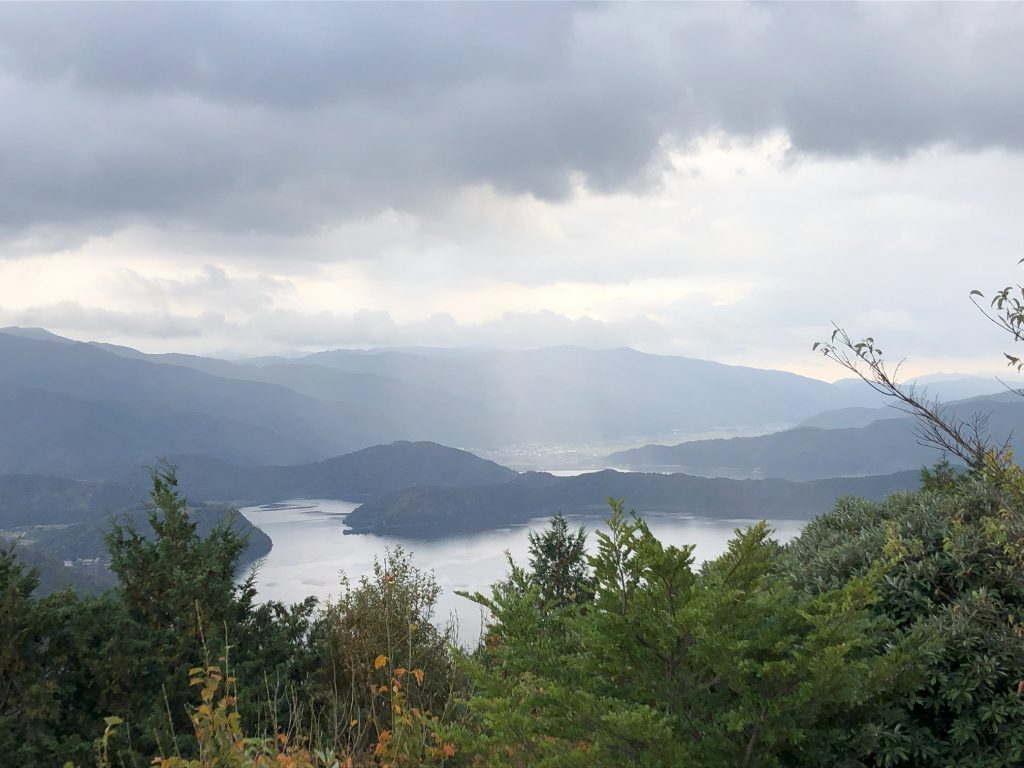
– Shakudani Stone
Shakudani stone, a famous stone also known from the Kitamaebune ships, is a green tuff with a bluish tinge that shines brightly when wet, exuding a mysterious charm. Because of its beauty, it was often used in Maruoka Castle and Fukui Castle, and in Ichijodani you can also see a group of stone Buddha statues made of Shakudani stone.
As Shakudani stone is no longer mined, it is extremely valuable, but recently tableware and accessories made from it have also been sold.
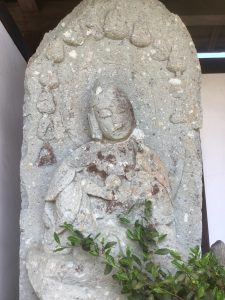
Religious Sites
– Daihonzan Eiheiji Temple,
a Zen training center
Eiheiji Temple is the Zen training dojo opened by Zen Master Dogen in 1244. There are more than 70 buildings and towers in the precincts of the deep mountain valley, and the seven buildings called the “Shichido (7) Garan” (lecture hall, Buddha hall, sodo, storage, mountain gate, toilet, and bathhouse) are considered to be particularly important buildings as a pure place for monks to train. Many monks still train hard every day at Eiheiji, and visitors can get a glimpse of their training.
In 2024, the US newspaper Washington Post named Fukui Prefecture “one of the most spiritual regions in the world,” and introduced Eiheiji as a major tourist destination in Fukui Prefecture!
If you want to deeply touch the heart of Zen, in addition to participating in the morning service, you can experience the “Zazen (Zen meditation) Experience” (about an hour, no reservation required) and the “One Night Zen Experience” (reservation required), which is a two-day, one-night Zen training mainly on zazen.
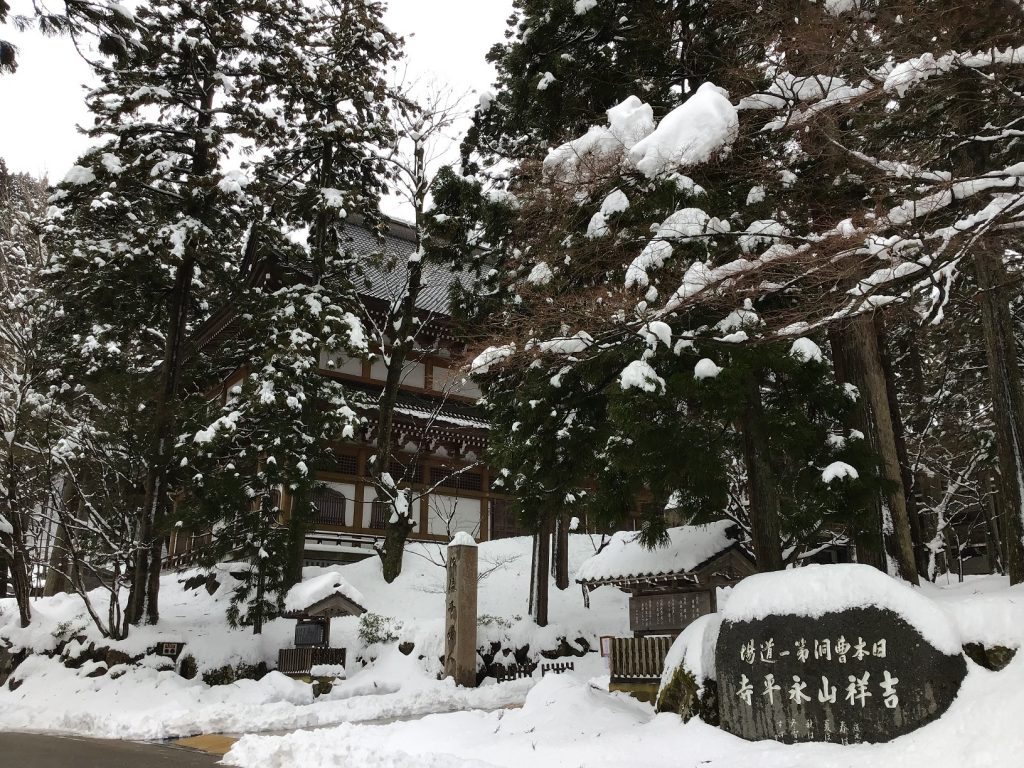
Activities
– Mountain Trekking
There are many mountains in the prefecture, including Mount Arashima (Ono City, 1,523m), the only one mountain in Fukui Prefecture selected as one of the 100 famous mountains, as well as high mountains on the border with Gifu, and rural mountains at around 300m above sea level, where local people enjoy hiking and trekking.

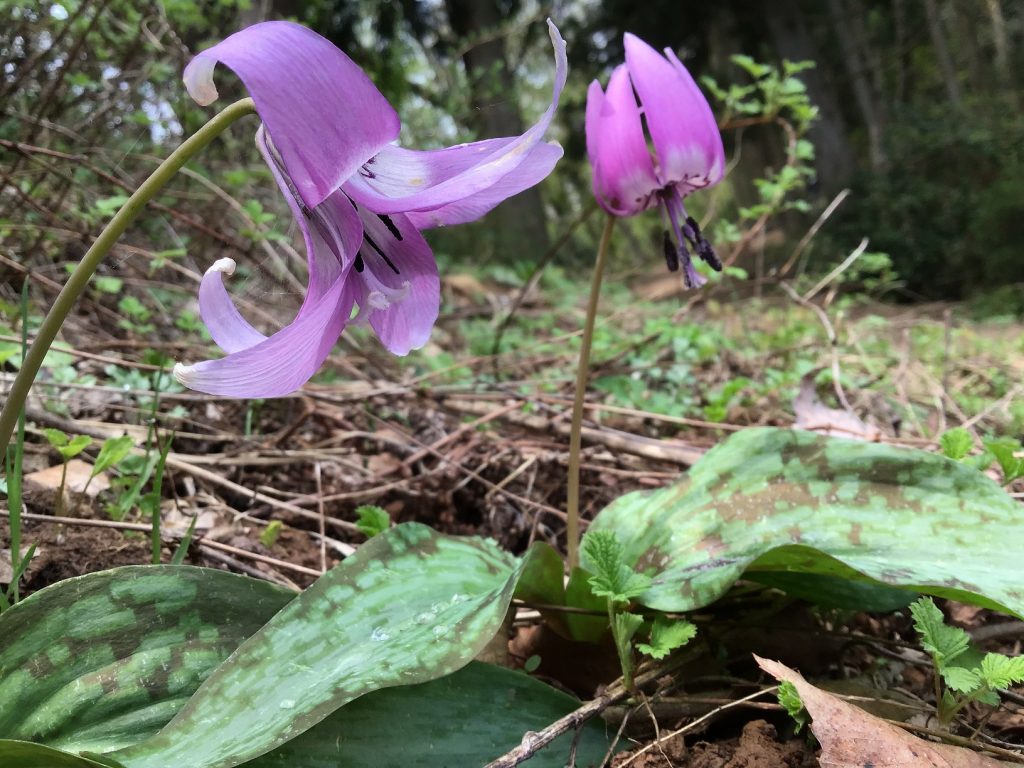
– Skiing
There are many ski grounds popular with locals, such as near the Dinosaur Museum and near Lake Kuzuryu, further deep mountain area from Ono Castle.
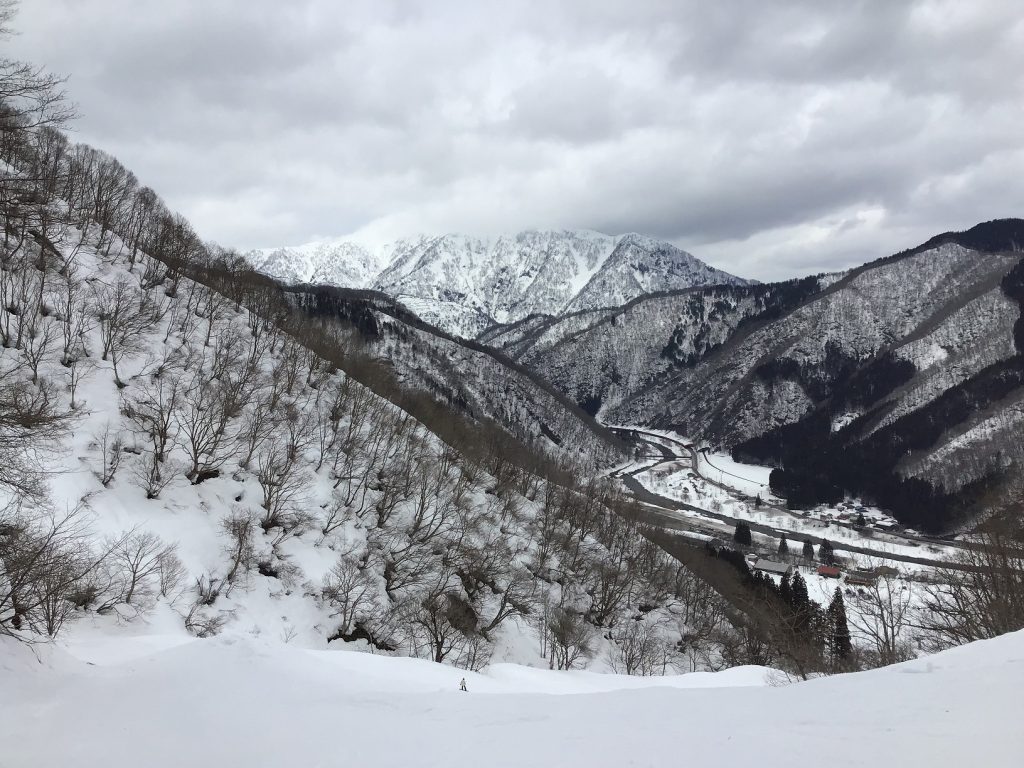
Gourmet
– Echizen crab
Echizen crab is also known as the “king of winter flavors.” Echizen crab is a male snow crab landed at a fishing port in Fukui Prefecture, and is identified by a yellow tag on its leg. Once you’ve tried it, you’ll never forget its plump texture and melt-in-your-mouth sweetness!
Landing of Echizen crab begins on November 6th every year, and you can enjoy it until March 20th of the following year.

– Soba noodles with grated radish
Fukui Prefecture is one of the top producers of buckwheat in Japan. In particular, in the northern region, “Echizen Oroshi Soba” is famous, which is cold buckwheat noodles topped with plenty of grated daikon radish, bonito flakes, chopped green onions, and topped with a refined tasting dashi.

– Japanese Sake
Fukui Prefecture has long been one of the top rice producers in Japan, and produces a lot of rice suitable for sake brewing. It also has clean, delicious water, and all the essential elements for sake brewing are present. There are more than 30 traditional sake breweries, large and small, in the prefecture, so there is an extremely wide variety of sake.
In Ono City (mentioned above), there are several sake breweries lined up, so you can enjoy touring them while walking around the city.
– Sauce cutlet bowl
Blessed with seafood and mountain produce, Fukui Prefecture has many uniquely evolved local gourmet foods (B-class gourmet foods). One of the most popular is the “Sauce Katsudon.” In Fukui Prefecture, “katsudon” means sauce katsudon, a simple combination of thin pork cutlet soaked in plenty of sauce and rice, but very satisfying!

– Volga rice
“Volga rice” is a specialty soul food of Echizen City, consisting of an omelet rice topped with pork cutlet.
Arrangements we can make
- Creating an overall itinerary
- Transportation
- Accommodation
- Guide
** In addition to these actual expenses, each arrangement fee is required.
See “Commission for Arrangements“
Since the capacity of accommodation and vehicles for transportation at the local area, it is ideal to travel by small group up to 8 people.
In addition, Public transportation is limited and very few within Fukui Prefecture, so we recommend chartering a taxi or bus for transportation.
Simple but amazing!
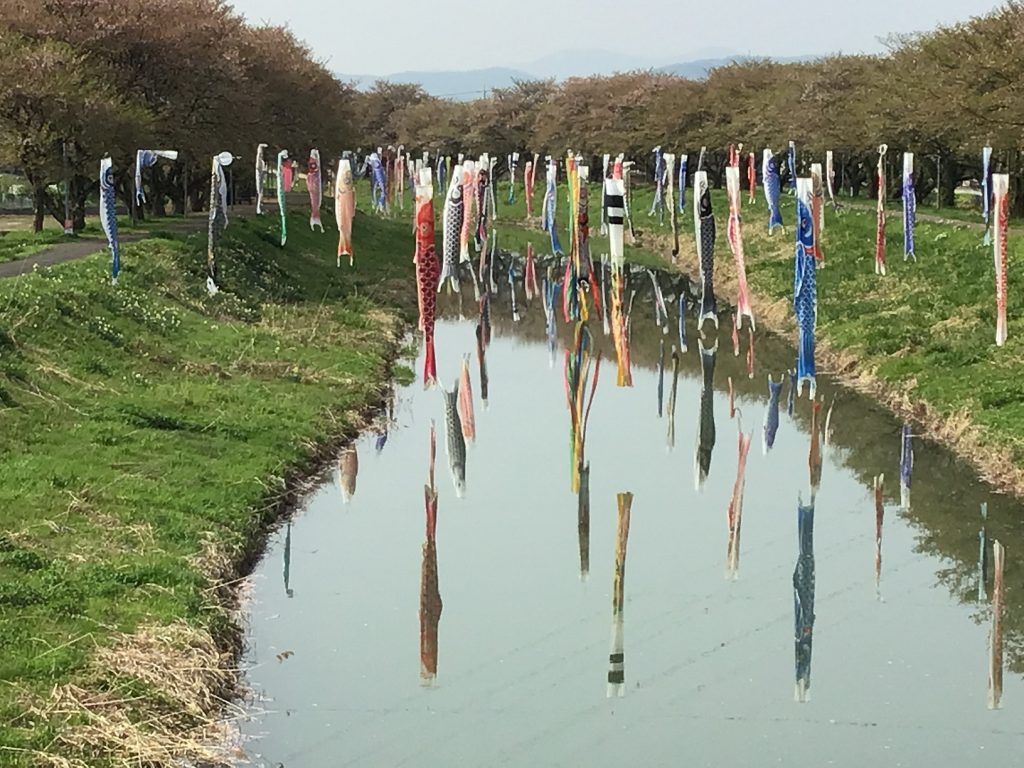
/// Cancellation Policy
Cancellation Policy for above course;
| Days to Departure | Cancellation Charge |
| More than 31 days | 5% of trip price |
| 30-15 days | 50% of trip price |
| 14-8 days | 80% of trip price |
| 7 days or Less, No Show | 100% of trip price |
Please refer to “Price, Terms and Conditions” for other detailed regulations.
/// Application Form
Please fill in the below box;
/// Payment
Payment can be settled by credit card (Paypal or Stripe).
After your booking, we will send you an invoice, then after your payment by credit card, the booking would be completed.
/// Contact
If you have any questions or offer to book, please send an email. We welcome even little questions! Don’t hesitate, and see you in Japan!!
Contact us: info@i-travel-square.tokyo
